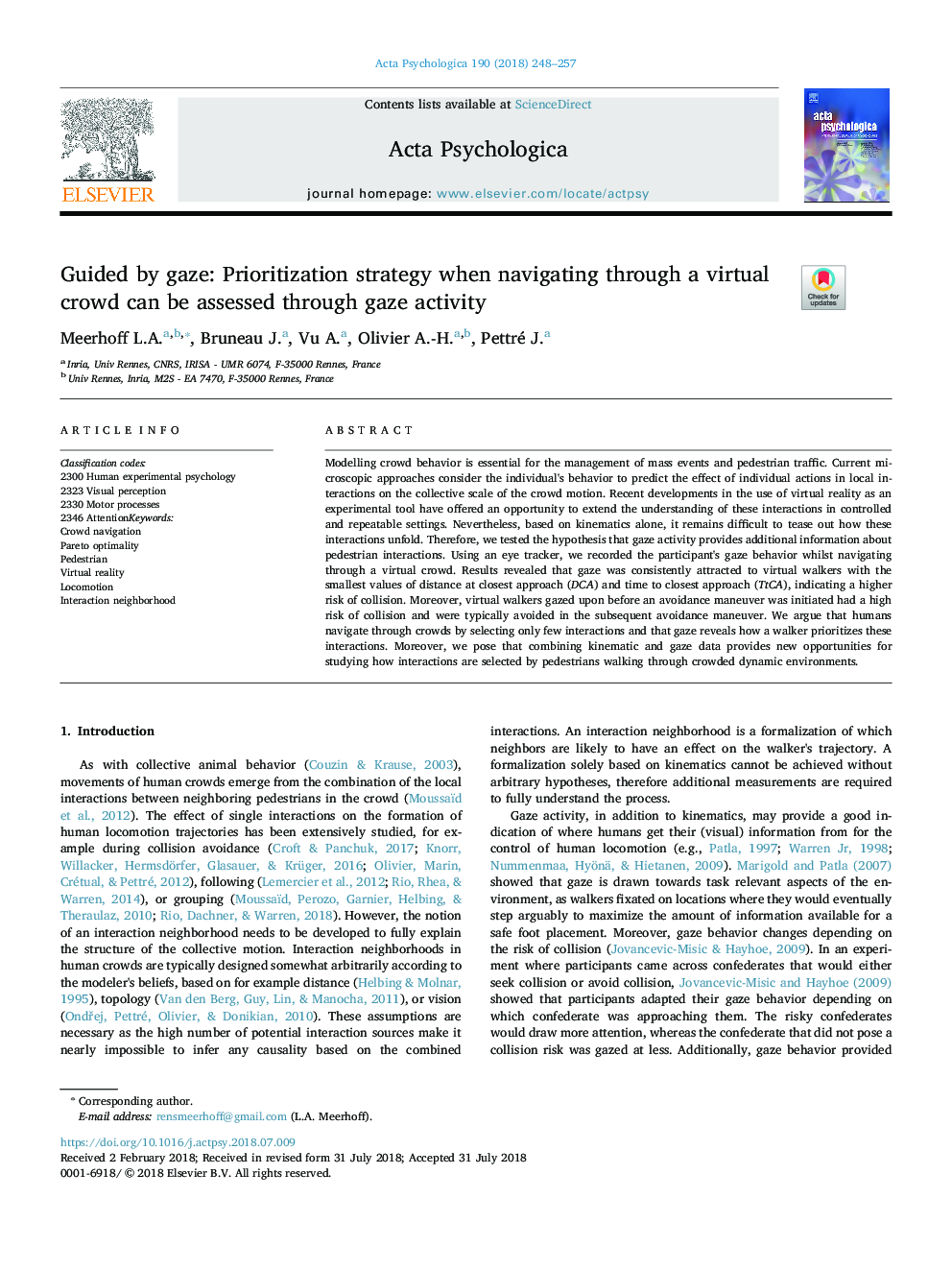| Article ID | Journal | Published Year | Pages | File Type |
|---|---|---|---|---|
| 11004512 | Acta Psychologica | 2018 | 10 Pages |
Abstract
Modelling crowd behavior is essential for the management of mass events and pedestrian traffic. Current microscopic approaches consider the individual's behavior to predict the effect of individual actions in local interactions on the collective scale of the crowd motion. Recent developments in the use of virtual reality as an experimental tool have offered an opportunity to extend the understanding of these interactions in controlled and repeatable settings. Nevertheless, based on kinematics alone, it remains difficult to tease out how these interactions unfold. Therefore, we tested the hypothesis that gaze activity provides additional information about pedestrian interactions. Using an eye tracker, we recorded the participant's gaze behavior whilst navigating through a virtual crowd. Results revealed that gaze was consistently attracted to virtual walkers with the smallest values of distance at closest approach (DCA) and time to closest approach (TtCA), indicating a higher risk of collision. Moreover, virtual walkers gazed upon before an avoidance maneuver was initiated had a high risk of collision and were typically avoided in the subsequent avoidance maneuver. We argue that humans navigate through crowds by selecting only few interactions and that gaze reveals how a walker prioritizes these interactions. Moreover, we pose that combining kinematic and gaze data provides new opportunities for studying how interactions are selected by pedestrians walking through crowded dynamic environments.
Keywords
Related Topics
Life Sciences
Neuroscience
Cognitive Neuroscience
Authors
Meerhoff L.A., Bruneau J., Vu A., Olivier A.-H., Pettré J.,
